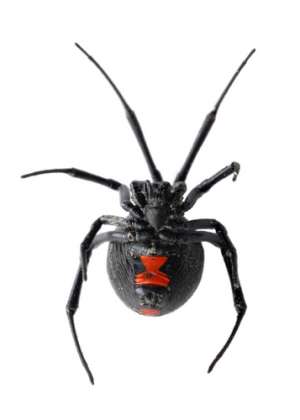How Common Are Spider Bites?
By Chris Williams on October 5, 2012.
Before bed bugs, if someone noticed an itchy, red welt, first thing in the morning, they would usually blame a spider? What other explanation could there be? It’s hard to convince people that getting a spider bite is actually a rare event. Despite what you hear, spider bites almost never happen!
 Spider Bite Facts
Spider Bite Facts
Here is a list of five spider bite facts that are not commonly known.
1) Few spiders can even bite us.
Of approximately 3,000 different spiders in the U.S., only a small number have fangs that are long enough and strong enough to break skin.
2) There's no reason for spiders to bite.
Our other biters (mosquitoes, ticks, chiggers, bed bugs) do so because our blood or other fluids supply them with food. Spiders have no interest in our fluids. Spiders avoid people. Even in areas where brown recluse spiders occur, bites are rare. For example, in one Kansas home, 2055 brown recluse spiders were collected over a 6 month period—but no one was bitten!
3) Of the small number of possible biters, only four spiders; are thought to be dangerous to people – recluse spiders, widow spiders, hobo spider, yellow sac spider.
The widow spiders have a neurotoxic venom that can cause serious illness while the others are blamed for necrotic* wounds which are usually not bites at all.
4) Dangerous spiders don’t occur everywhere in the U.S.
People and even physicians pay little attention to the actual range of the brown recluse and other spiders. It has been estimated that 60% of alleged brown recluse spider bites occur in areas where no brown recluse spiders are known to exist. Yet, physicians get claims of brown recluse bites all the time, and almost always, the victim never saw the offending spider. We don’t have brown recluse spiders in our area but bite claims continue to surface.
5) It’s estimated that about 80% of spider bites diagnosed are incorrect.
There are at least 30 medical conditions that are easily misdiagnosed as spider bites, and there are a number of other arthropods whose bites are blamed on spiders. Physicians are probably the worst offenders. If the patient implicates a spider and the skin lesion looks like it could be a bite, the doctor usually pronounces it a spider bite, prescribes ointment, and sends the patient home.
Spider experts feel that the diagnosis of “spider bite” should only be made when a spider is caught in the act of biting, or is otherwise reliably associated with the wound and has been identified by an expert. 
The unfortunate outcome of misdiagnosed spider bites is that people with serious medical problems may go undiagnosed and untreated when the easier diagnosis of spider bite is made instead. Perhaps the most important recent bite confusion is with MRSA, a sometimes deadly Staph infection that causes draining skin abscesses and is becoming increasingly common.
There is one clue as to whether the bite is from a spider. A spider bite is distinguished by two small punctures, set close together, from the spider’s two fangs. An actual spider bite will have a little redness, a little swelling, a little itching…and will go away by itself. This doesn’t mean that you can’t be bitten by a spider. Just remind yourself that a spider bite is extremely unlikely and ask yourself first, what else could it be?
* The bite of the brown recluse spider can result in a dermonecrotic lesion. These necrotic lesions are a result of the spider’s venom which is designed to liquefy its prey. The venom breaks down dermal tissue, causing an open sore or ulcerated crater with sloughing skin that is slow to heal.